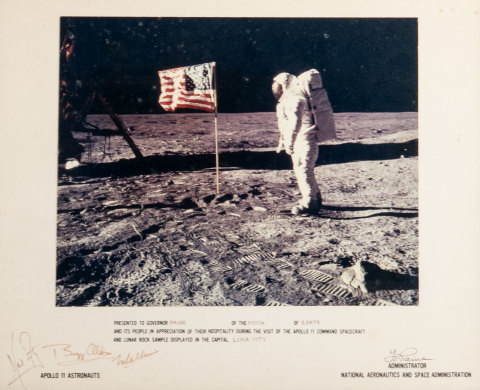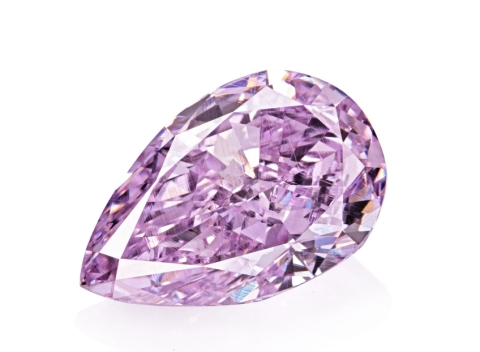Estimated Reading Time: 8 minutes • Last updated: 09.03.19
“Don’t judge a book by its cover,” or so the adage goes, but is the same true for the book’s opening line? Opening lines set the tone for a work of literature, serving as an invitation for a reader; it’s up to the author to extend one that cannot be turned down. Author Stephen King recently revealed that he spends months, even years, writing opening sentences, attributing the success of the entire book to these first few words.
“And yet a really good first line can do so much to establish that crucial sense of voice—it’s the first thing that acquaints you, that makes you eager, that starts to enlist you for the long haul. So there’s incredible power in it, when you say, come in here. You want to know about this. And someone begins to listen.” – Stephen King
The importance of an extraordinary first line is undeniable, but equally as important is the closing sentence. This is what truly brings the story full circle and leaves readers with an indelible impression of the book. Final lines have the ability to anchor in a reader’s mind long after the book is finished, so it’s a remarkable achievement when authors can create a last line equally as impressive as their first. Here, we uncover iconic books that have equally powerful first and last lines, and what we can draw from the authors who crafted these compelling lines.
Pride and Prejudice (1813)
First Line
“It is a truth universally acknowledged, that a single man in possession of a good fortune, must be in want of a wife.”
Jane Austen’s famous novel begins with a statement of principle, and the story that follows affirms this 19th-century notion, leading readers to the answers they seek. Austen forces the readers to recognize the satire, which she sees as “universally acknowledged.” This has been done in contemporary novels as well, evidenced by Jane Hamilton’s The Book of Ruth in which the first line states, “What it begins with, I know finally, is the kernel of meanness in people’s hearts…”
Last Line
“…and they were both ever sensible of the warmest gratitude towards the persons who, by bringing her into Derbyshire, had been the means of uniting them.”
Austen’s novel is set in a world where both expectations and reputation matter, foreshadowed in the novel’s very first line. The book’s final sentiments allow it to come full circle, alluding to outside principles once again, and how marriage’s social impact affects not only the individual partners but the wider community around them.
Moby-Dick (1851)
First Line
“Call me Ishmael.”
Herman Melville delivers one of the most famous lines in literary history in his American classic, Moby-Dick. The simple statement, “Call me Ishamel,” has been met with various theories as to Melville’s intention. One suggestion is that he wanted to indicate that the narrator may have been hiding something or acting duplicitous. Another is that he wanted to evoke imagery surrounding the biblical figure Ishmael, who was an outcast. The last theory about this iconic first line is that Melville is about to establish a casual introduction; a call to familiarity. By introducing the novel this way, it allows readers to get comfortable with the narrator and first person story that is about to unfold.
Last Line
“And I only am escaped alone to tell thee.”
Equally as intriguing is the last line of Melville’s novel. Ishmael states, “And I only am escaped alone to tell thee,” signaling that he is the only one to survive a massive wreck. Everyone is killed but the narrator, who had quickly familiarized himself with audience from the very first line.
Anna Karenina (1873)
First Line:
“All happy families are alike; each unhappy family is unhappy in its own way.”
The first lines of Leo Tolstoy’s 1873 novel are some of the most famous of all time. They spark interest by stating a hard truth that seemingly comes from deep within the narrator’s (or writer’s) soul. By stating this hard-earned insight, and allowing the story to support it, Tolstoy immediately sparks interest. Another aspect that makes this opening sentence that much more compelling is the timeliness of it. The theme of family values was a frequent target of attack by young Russian liberals during the time, so Tolstoy successfully capitalized on the level of buzz generated around the topic.
Last Line
“…[M]y life now, my whole life, regardless of all that may happen to me, every minute of it, is not only not meaningless, as it was before, but has the unquestionable meaning of the good which it is in my power to put into it!”
The last lines of Anna Karenina reinforce the goal of the novel: to discuss family values. Again timely, he concludes with an abstract philosophical statement that focuses on the self as the center of existence, a theory that was of interest during the time this novel was written.
The Great Gatsby (1925)
First Line
“In my younger and more vulnerable years my father gave me some advice that I’ve been turning over in my mind ever since.”
F. Scott Fitzgerald opens his 1925 novel with an introduction to its narrator, Nick Carraway. Within the first few words, we’re able to surmise a few key points about Nick: he is reflecting back on life, he considers his father to be a wise man, he identifies with privilege, and there are certain life events that have challenged his thinking and perspective. This entices the reader to want to know more about what those events may be and what else entrances this mysteriously introduced character.
Last Line
“So we beat on, boats against the current, borne back ceaselessly into the past.”
One of the most famous last lines in literature, Fitzgerald uses a metaphor to beautifully sum up the novel in tone and in meaning. He harps on Gatsby’s constant need to recapture the past, re-emphasizing the essential theme of the book.
1984 (1949)
First Line
“It was a bright cold day in April, and the clocks were striking thirteen.”
George Orwell’s novel 1984 begins with a relatively simple, well-written statement, but through it, he hooks the reader with a multitude of techniques. First, he combines two simple facts: it was a cold day in April and the clocks were striking thirteen. These two facts combined are more powerful than either on their own and the drama of the sentence locks in the reader.
Second, Orwell uses sensory motion with his words, “were striking,” which transports you into the narrative and allows you to imagine the clocks striking thirteen times.
Last Line
“He loved Big Brother.”
Orwell’s final lines are designed to shock and evoke a strong emotion from the reader, in this case, that of heartbreak. The four final words snap readers out of any delusion of change or revolution, and catapult them back to the inescapable status quo. The unhappy ending doesn’t come as too much of a surprise since it’s a dystopian novel. However, Orwell sets up readers to believe there is a possibility that his characters, Winston and Julia, will live happily and freely in love, only to hurtle the narrative to an inevitable, emotionally-draining conclusion.
The Catcher in the Rye (1951)
First Line
“If you really want to hear about it, the first thing you’ll probably want to know is where I was born, and what my lousy childhood was like, and how my parents were occupied and all before they had me, and all that David Copperfield kind of crap, but I don’t feel like going into it, if you want to know the truth.”
J.D. Salinger does a few things in the opening sentence of his 1951 novel. First, he announces he is going to tell a story. This method has been used by English storytellers since the 14th century with the first recorded use of “Once upon a time,” and the straightforward brilliance of it has continuously proven to excite readers.
Similarly, Salinger draws the reader in by introducing a character as soon as possible. In his first few words, he sketched out a living, breathing, and most importantly, interesting character that allows a reader to draw a few immediate conclusions: the character exudes some angst, is a bit cynical, has an interest in literature, and a distaste for pretension.
Last Line
“Don’t ever tell anybody anything. If you do, you start missing everybody.”
Salinger’s novel comes full circle with a final note from the character he introduced in his famous first lines, who readers find out to be 17-year-old Holden Caulfield. In the last line, Holden relates to many with his desire to quell heightened emotions, plagued by the death and abandonment of many of those he loved.
The Old Man and the Sea (1952)
First Line
“He was an old man who fished alone in a skiff in the Gulf Stream and he had gone eighty-four days now without taking a fish.”
Ernest Hemingway’s short novel does an impeccable job setting the scene for the reader in the first line. His writing allows readers to perfectly visualize what is happening, where it’s happening, and what the mindset of the main character is. By setting the time and space coordinates, Hemingway allows the reader to conjure up a specific atmosphere of interest.
Last Line
“The old man was dreaming about the lions.”
Hemingway’s last line ends with a reference to a dream described within the first fifteen pages of the book, allowing the story to come full circle. The lion symbolizes youth, strength, and hope for the old man, allowing the writer to end the novel on a positive note.
The Bell Jar (1963)
First Line
“It was a queer, sultry summer, the summer they electrocuted the Rosenbergs, and I didn’t know what I was doing in New York.”
In the opening words of Sylvia Plath’s novel, she is able to quickly establish a mood by presenting contextual information that guides our understanding of the coming narrative. She effectively sets a tone that foreshadows what lies ahead for main character Esther Greenwood’s life in New York City.
Last Line
“The eyes and faces all turned themselves towards me, and guiding myself by them, as by a magical thread, I stepped into the room.”
Plath’s final words leave the reader to come to their own conclusions as to Esther’s fate as she enters an interview at the psychiatric institution where she has spent the past few months recovering. Ultimately, the reader doesn’t have a concrete answer as to if she was released or what happens in the interview, leaving readers to draw their own conclusions.
Beloved (1987)
First Line
“124 was spiteful.”
Toni Morrison was known for her short and punchy opening lines, and her 1987 novel Beloved was no different. This three word opening sentence forces the reader to ask questions. Is 124 a person? A building? Why is this thing spiteful in general? The intrigue she generates through her short opening line is enough to keep the reader turning pages.
Last Line
“This is not a story to pass on.”
The impact of final words is not in the closing line of Morrison’s novel, but rather in a phrase she repeats at least three times throughout the last chapter, which is short, sweet, and packed with a ton of meaning. A powerful story about slavery, the phrase, “This is not a story to pass on,” allows her three main characters to continue the process of healing and look ahead, transcending the dehumanizing institution of slavery.
How to Write a Compelling Opening and Closing Statement
Whether through dialogue, a compelling character, or ominous foreshadowing of a plot line yet to unfold, there are tools and techniques that authors commonly use to grab the attention of their readers. As a book comes to a close, these techniques are again leveraged to leave a lasting impression on a reader. Understand how to implement these strategies by dissecting some of the most memorable first and last lines of classic literature.

































